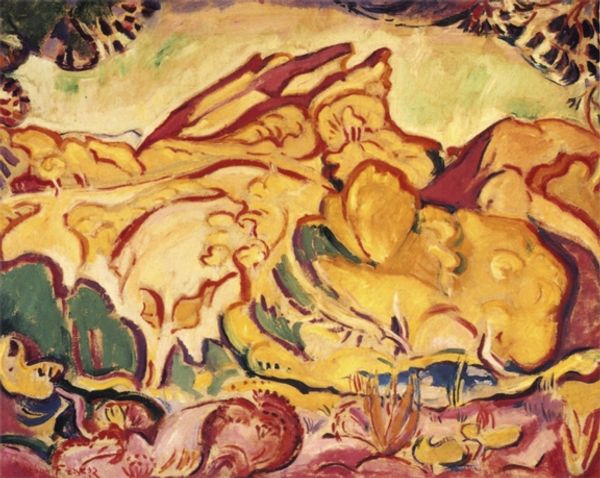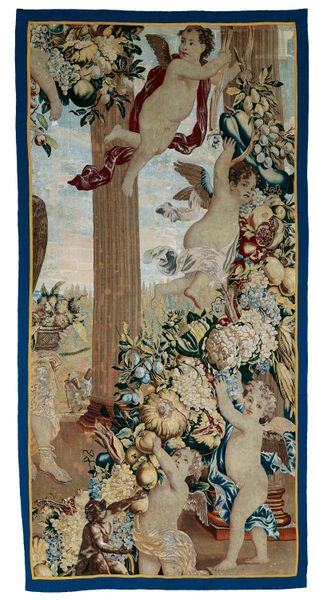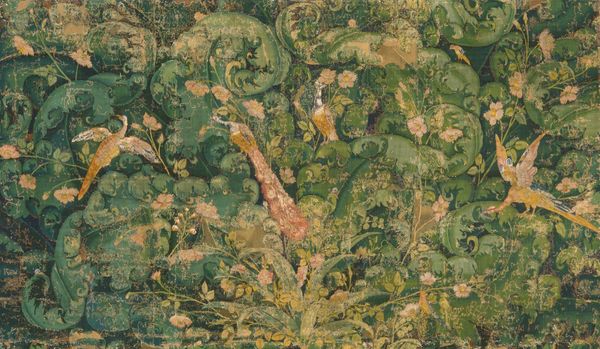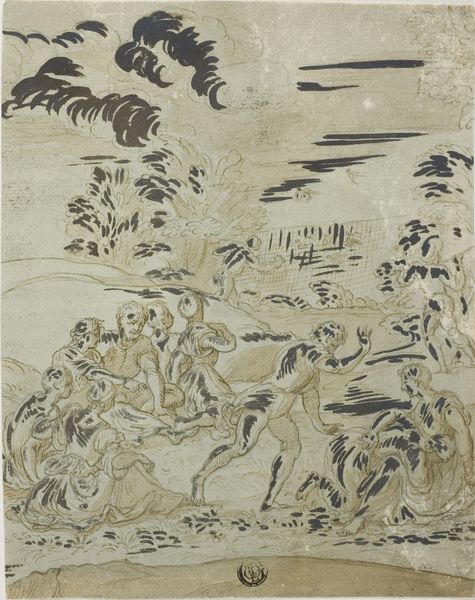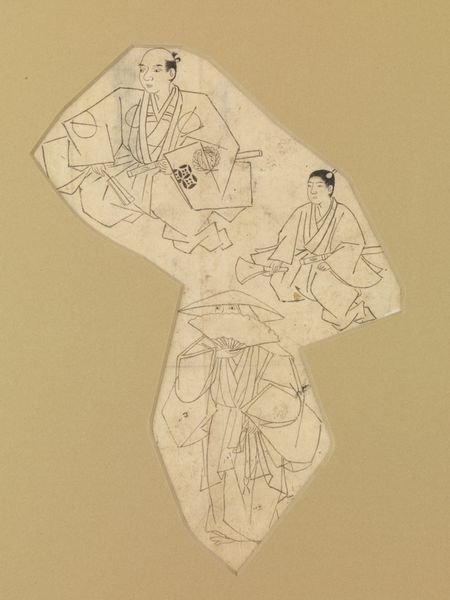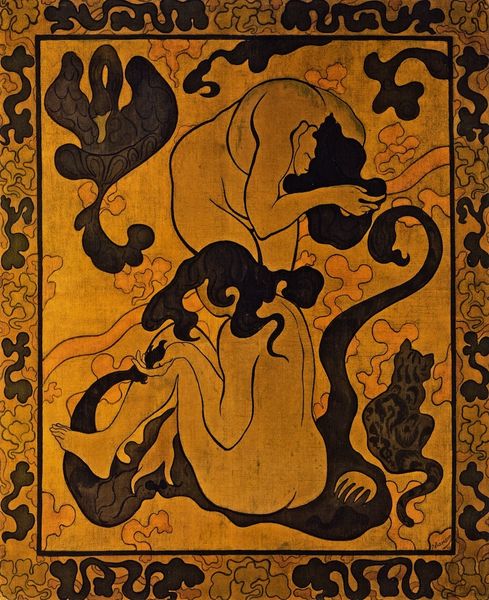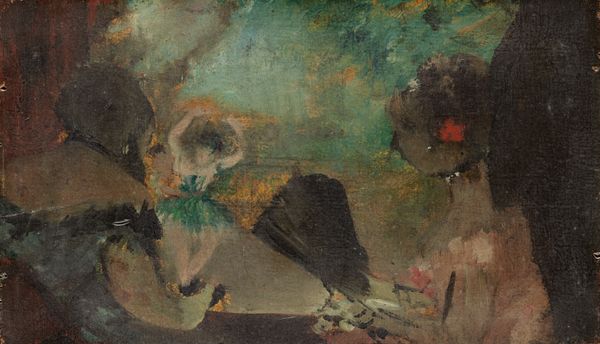
Music (Painting and Decoration of a Piano), 1920
0:00
0:00
konstantinosparthenis
National Art Gallery (Alexandros Soutzos Museum), Athens, Greece
painting, watercolor
#
abstract painting
#
water colours
#
painting
#
greek-and-roman-art
#
landscape
#
figuration
#
handmade artwork painting
#
watercolor
#
intimism
#
symbolism
Dimensions: 144 x 140 cm
Copyright: Public domain US
Curator: This is Konstantinos Parthenis' "Music (Painting and Decoration of a Piano)," executed in watercolor circa 1920. What are your first impressions? Editor: There’s a distinct dreamy quality, a kind of melancholic echo hanging in the air. I’m curious about its original context as a piano decoration—did the music it accompanied mirror this wistful landscape? Curator: The composition is intriguing. The ethereal figures seem to float, their forms echoing the landscape, merging with the idyllic background of stylized trees and hills. The whole painting vibrates with soft colors. Editor: Yes, and considering Parthenis' roots in Greek and Roman art, it makes you wonder about the position of the female figures depicted here. It has references to classic Greek figures in dreamy form. Are they muses or are they modern expressions of Greek women in his time, longing for emancipation? Curator: An interesting proposition. From a formalist perspective, one might consider how the layering of watercolor creates a sense of depth despite the relatively flat application. Note the sinuous lines that connect each element, weaving them into a cohesive whole. It presents a certain structural rhythm. Editor: I can’t help but think of the turbulent interwar period in Greece. Was this idealism a refuge from political instability or a deliberate aesthetic choice disconnected from reality? Maybe an invocation for better days through embracing arts and intimate gatherings? Curator: Perhaps it's both. Parthenis seems to be exploring the possibilities of symbolism to transcend pure representation. He moves into more conceptual domains, where music, art, and the Greek landscape intertwine, offering an escape into beauty. Editor: I agree. What strikes me most is how this decorative piece opens up questions about the interplay between the intimate domestic space of music-making and the broader socio-political environment that always resonates, even within the apparent tranquility of a landscape. It’s an important consideration for an understanding of early twentieth-century Greek society, at large. Curator: Yes, reflecting upon this intimate interaction with Parthenis, it's now hard not to consider the interplay between the abstract form and the concrete emotion it evokes. Editor: Absolutely, the tension between aesthetic escapism and embedded cultural significance elevates this beautiful decoration into an engaging historical document of arts and social contemplation.
Comments
No comments
Be the first to comment and join the conversation on the ultimate creative platform.

